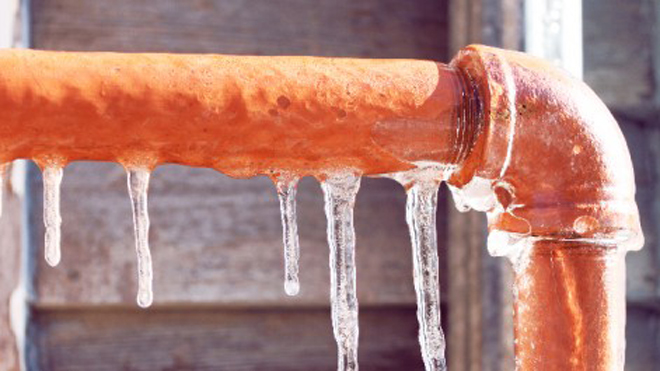Shielding Pipes from Cold Weather Issues: Critical Tips
Shielding Pipes from Cold Weather Issues: Critical Tips
Blog Article
Presented here below you can locate lots of high-quality additional info involving Winter Plumbing Precautions: Preventing Frozen Pipes.

Cold weather can damage your plumbing, particularly by freezing pipelines. Right here's just how to stop it from happening and what to do if it does.
Intro
As temperature levels drop, the danger of icy pipes boosts, possibly resulting in pricey repairs and water damage. Comprehending how to stop icy pipes is critical for house owners in cold climates.
Prevention Tips
Protecting at risk pipelines
Cover pipelines in insulation sleeves or use warmth tape to safeguard them from freezing temperature levels. Concentrate on pipes in unheated or exterior locations of the home.
Heating methods
Keep indoor areas effectively heated, specifically locations with pipes. Open cabinet doors to enable cozy air to distribute around pipes under sinks.
Exactly how to determine frozen pipes
Search for reduced water circulation from taps, unusual odors or noises from pipes, and noticeable frost on revealed pipes.
Long-Term Solutions
Architectural changes
Consider rerouting pipelines far from exterior walls or unheated locations. Include added insulation to attic rooms, cellars, and crawl spaces.
Upgrading insulation
Purchase premium insulation for pipelines, attic rooms, and walls. Appropriate insulation helps preserve constant temperatures and minimizes the threat of frozen pipes.
Safeguarding Outside Plumbing
Garden tubes and outdoor faucets
Separate and drain pipes garden tubes before winter months. Mount frost-proof spigots or cover exterior taps with insulated caps.
Understanding Icy Pipes
What creates pipes to ice up?
Pipelines freeze when exposed to temperatures below 32 ° F (0 ° C) for expanded periods. As water inside the pipelines freezes, it expands, taxing the pipeline wall surfaces and possibly causing them to break.
Dangers and problems
Frozen pipes can result in supply of water disturbances, property damage, and pricey repairs. Burst pipes can flood homes and create considerable architectural damage.
Indicators of Frozen Pipes
Determining frozen pipes early can avoid them from bursting.
What to Do If Your Pipes Freeze
Immediate actions to take
If you believe frozen pipes, keep faucets open up to soothe pressure as the ice melts. Make use of a hairdryer or towels taken in hot water to thaw pipelines slowly.
Conclusion
Preventing icy pipes needs proactive measures and quick reactions. By understanding the causes, indicators, and safety nets, homeowners can protect their plumbing throughout cold weather.
5 Ways to Prevent Frozen Pipes
Drain Outdoor Faucets and Disconnect Hoses
First, close the shut-off valve that controls the flow of water in the pipe to your outdoor faucet. Then, head outside to disconnect and drain your hose and open the outdoor faucet to allow the water to completely drain out of the line. Turn off the faucet when done. Finally, head back to the shut-off valve and drain the remaining water inside the pipe into a bucket or container. Additionally, if you have a home irrigation system, you should consider hiring an expert to clear the system of water each year.
Insulate Pipes
One of the best and most cost-effective methods for preventing frozen water pipes is to wrap your pipes with insulation. This is especially important for areas in your home that aren’t exposed to heat, such as an attic. We suggest using foam sleeves, which can typically be found at your local hardware store.
Keep Heat Running at 65
Your pipes are located inside your walls, and the temperature there is much colder than the rest of the house. To prevent your pipes from freezing, The Insurance Information Institute suggests that you keep your home heated to at least 65 degrees, even when traveling. You may want to invest in smart devices that can keep an eye on the temperature in your home while you’re away.
Leave Water Dripping
Moving water — even a small trickle — can prevent ice from forming inside your pipes. When freezing temps are imminent, start a drip of water from all faucets that serve exposed pipes. Leaving a few faucets running will also help relieve pressure inside the pipes and help prevent a rupture if the water inside freezes.
Open Cupboard Doors
Warm your kitchen and bathroom pipes by opening cupboards and vanities. You should also leave your interior doors ajar to help warm air circulate evenly throughout your home.

We were shown that editorial on Winter Plumbing Precautions: Preventing Frozen Pipes through an associate on our other web property. Loved our content? Please quickly share it. Let other people locate it. Thanks a bunch for your time. Return soon.
Hire A Pro Report this page